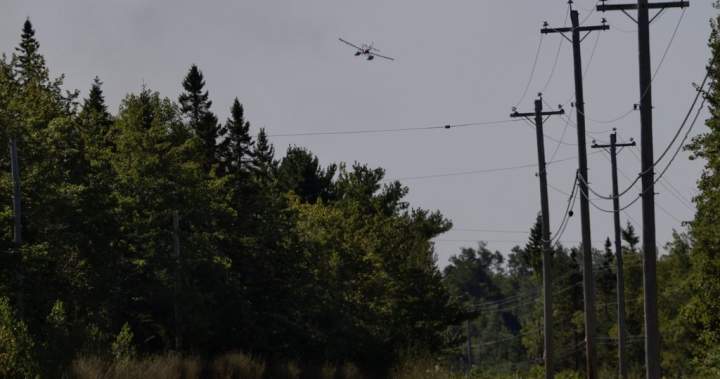A rapidly expanding wildfire in Nova Scotia’s Annapolis Valley has forced hundreds of residents to evacuate as emergency crews battle against challenging weather conditions to contain the blaze. The fire, which began Thursday afternoon near New Ross, has already consumed over 150 hectares of forested area and continues to threaten residential communities in the region.
“We’re facing a perfect storm of dry conditions and unpredictable winds,” said Fire Chief Michael Dalton of the Annapolis Valley Fire Service. “Our teams are working around the clock, but this fire is proving exceptionally difficult to contain due to the terrain and weather patterns we’re experiencing.”
The Nova Scotia Emergency Management Office issued mandatory evacuation orders late Thursday for residents in several communities including Forties, New Ross, and portions of western Lunenburg County. Officials estimate approximately 350 homes are currently under evacuation orders, with temporary shelters established at community centers in Windsor and Kentville.
Provincial officials have mobilized additional resources from across Canada, including water bombers from neighboring New Brunswick and specialized wildfire teams from Ontario. The coordination effort represents one of the largest emergency responses in the province since the devastating Halifax-area wildfires of 2023.
“What makes this situation particularly concerning is how early in the season we’re seeing such aggressive fire behavior,” explained Dr. Amanda Richards, forest ecology specialist at Dalhousie University. “Climate data shows we’re experiencing drought conditions typically not seen until mid-summer, creating tinderbox conditions throughout the valley’s forests.”
Local resident Sarah MacKenzie, who evacuated her home near New Ross, described the scene: “The sky turned this eerie orange color, and you could smell the smoke from kilometers away. We had about 30 minutes to grab what we could and leave. The uncertainty of not knowing if you’ll have a home to return to is overwhelming.”
Provincial officials have indicated that the fire remains “out of control” as of Friday morning, with containment efforts hampered by winds gusting up to 40 km/h and relative humidity levels below 30 percent. The Nova Scotia Department of Natural Resources has implemented a complete ban on open burning throughout the province until further notice.
The economic impact on the region is already being felt. The Annapolis Valley, known for its agriculture and tourism, faces significant disruption during what would typically be the beginning of its busy season. Local businesses have begun organizing relief efforts for displaced residents, with several hotels offering discounted rates and community organizations establishing donation centers.
“We’re tracking this as part of a concerning pattern of increasingly severe spring wildfires across Eastern Canada,” noted Environment Canada meteorologist Jean Leblanc. “The data suggests these extreme fire conditions are becoming more frequent, consistent with climate change projections for the region.”
Emergency officials are urging residents in potentially affected areas to prepare emergency kits, secure important documents, and remain vigilant for evacuation notices. Regular updates are being provided through the provincial emergency alert system and social media channels.
As firefighters continue their battle against this growing threat, one question remains at the forefront for many Nova Scotians: Is this early-season wildfire a harbinger of what could become the new normal for our changing climate, and if so, how must our emergency preparedness strategies evolve to meet this challenge?










